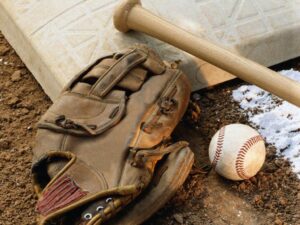One of my favorite sci-fi flicks is Star Trek: First Contact. The first 20 minutes are some of the greatest deep-space action sequences I’ve ever seen, but what makes the movie great, of course, is the villainous Borg. The Borg function as a hive, they are profoundly creepy in an elemental way, they make us wonder about ourselves and our deterministic exceptionalist tendencies as a species. Maybe we’re doomed to be swallowed up by some sort of advanced ant-like social collective. Like Stephen Hawking says, if an alien species were to actually make contact, we’d be toast. Scary stuff.

You know what’s scarier than an alien invasion? I think the Borg have taken over statistical analysis in Major League Baseball. There is a collectivism in the approach to team statistics that would make a Borg Queen blush. The famous Billy Beane paradigm where they try to build Jason Giambi by incorporating the sum of his parts into several cheaper players, a Frankenstat-Giambi if you will, has resulted in a tendency to look at team offense in the aggregate more so today than at any other time in the history of the game. The extent to which front offices have applied these attempts to build statistical by-products into their offensive attacks would make Mary Shelly proud.
On a more theoretical plain, when looking at an aggregate (the macro-level) you invariably dilute the significance of the exceptional (the micro-level). Would you miss the significance of a Vladimir Guererro in your lineup as a result? I should hope not, but by focusing on collective stats such as OBP (because they run up pitch counts and wear out opposing starters), you may miss the individual contributions of exceptional performers. For instance, if you look at a Mariner’s mediocre at best offensive performance as a whole you might miss the remarkable achievements of Ichiro Suzuki. Does it matter if in the end the team reaches the same statistical milestones? Well, that’s what I’d like to try and answer.
What if you took two teams with comparable statistical outcomes, but one reflected a more balanced performance across all members of the lineup while the other had a few players who performed poorly and a few who were truly exceptional “superstar” types. Which is better? The end result, the aggregate, is more or less equal, in terms of runs scored, OBP, slugging, but the two differ in how they got there.
Lets look at two teams with some comparable aggregate statistics.
|
OBP |
BB% |
AVG |
Runs |
WAR |
|
|
Team 1 |
.315 |
7.9 |
.251 |
669 |
25.9 |
|
Team 2 |
.319 |
8.8 |
,247 |
651 |
25.6 |
With a few exceptions these two teams are fairly similar, in fact they are ranked in succession offensively on fangraphs. Team 2 has a slightly higher OBP and walk rate while team 1 has a slightly higher AVG and a few more runs. One major difference, however, is payroll. Team 1 has a payroll of $82,203,616 with an average salary of $2,935,843, while team 2 has a payroll of $55,244,700 with an average salary of $1,973,025. Team 2 ended up with some remarkably comparable aggregate statistics for 27 million less in annual salary.
Some of you may have already guessed at the identity of team 2 by their payroll, they are of course Alderson’s old team the San Diego Padres, and they reflect the kind of on-base presence we’re used to with Alderson’s teams.
Team 1 is a playoff team that packs a whole lot more star power, they are the Cincinnati Reds. They sport a perennial MVP hitter at the center of their lineup not to mention some major power threats. The aggregate effect of their talent is more concentrated in a few truly exceptional players and is less the blanket product of a trickled down organizational principle.
Teams historically have attempted to piece-meal collective benchmarks into their lineups that they could not otherwise afford were these accomplishments a product of individual players.Teams like the Twins, the A’s, and the Braves have spent modestly, drafted wisely, and have developed consistently serviceable major league players, but there’s no such thing as a free lunch. These three teams have made the post season a whopping 33 times since 1975, but for all these appearances they have only 4 World titles between them. Seems like a statistical anomaly when for much of that time they were competing in a 4 team tournament doesn’t it? Good but not good enough in the post season — lacking those exceptional (and expensive) talents that might have pushed them over the top.
The problem is that lots of guys in the minors have a good eye but there aren’t that many Miguel Cabreras. Sure you can draft and develop with an eye on clogging the bases, and this approach might even get you to the playoffs, but once there who would you rather have come up in a tight spot against Matt Cain, Yonder Alonso and his .348 OBP or Joey Votto? Yonder might carry you during the regular season when you’re going up against league average more often than not, but I think you want Votto in there if you’re facing Roy Halladay in a deciding game. Institutionalized directives such as Alderson’s OBP bias and Beane’s desire to spread around dismembered Jason Giambis are all fine and dandy until the poop hits the fan and you end up staring down a Justin Verlander fastball. When the aggregate is equal, exceptional talent is the tiebreaker … the player who can actually hit a Verlander fastball out of the park or who can actually strike out Cabrera.
Exceptional talent must be met with exceptional talent if you want to win the big prize. There is simply no way around that. The Padres played “Alderson-ball” right up there with the Reds, they walked, they got on base, they hit, they even scored a similar number of runs, but in the end they sure didn’t win as many games. Why? While the Padres were able to perform according to many of the tenets of Alderson’s offensive philosophy, they didn’t have the exceptional abilities that the Reds have in other offensive domains, namely slugging and power skill sets that are considerably more expensive to procure.
|
HR |
RBI |
H |
SLG |
W-L |
|
|
Reds |
172 |
636 |
1377 |
.411 |
97 – 65 |
|
Padres |
121 |
610 |
1339 |
.380 |
76 – 86 |
What does all this mean for the Mets? Building from the farm is great, being more selective and improving plate discipline system wide is terrific and may win lots of games. During the regular season an aggregate effect spread across a given lineup may wear down lesser opponents more often then not, but if you want to win big you have to augment with free agents possessing those harder to come by skill sets. If we ever wish to reach the promised land again our owners are going to have to open their wallets and spend big on the exceptional, those select few who can put you over the top.














